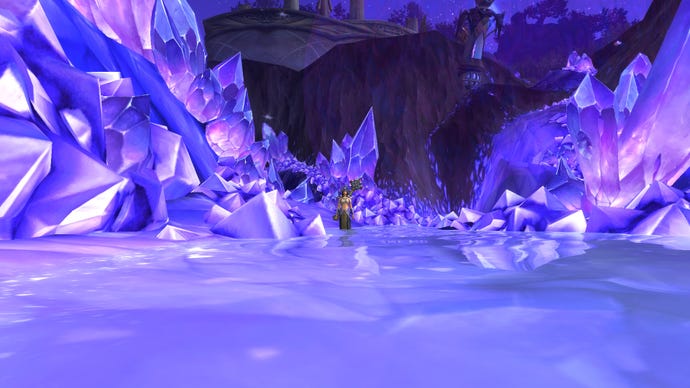World of Warcraft: Legion PC Review: Back to Form
It might be nearly twelve years old, but World of Warcraft is still going strong.
This article first appeared on USgamer, a partner publication of VG247. Some content, such as this article, has been migrated to VG247 for posterity after USgamer's closure - but it has not been edited or further vetted by the VG247 team.
Jaz Rignall, Primary Reviewer
I've invested more time into World of Warcraft and its five expansions than any other game: My playtime across numerous characters adds up to multiple thousands of hours. As you might expect, over the years I've experienced pretty much everything the game has to offer, from pet battling through dungeons and raiding to PvP.
To say I love the game is an understatement, although my feelings for Blizzard's enduring MMO were challenged during the rather disappointing Warlords of Draenor expansion. I wasn't a huge fan of the changes it brought to the game in terms of pruned character abilities, and found its content updates sporadic and rather uninteresting. Because of that, I stopped playing for a year, but returned for the Legion pre-patch freshly invigorated and cautiously optimistic that WoW's sixth expansion might bring the series back to its former glories.
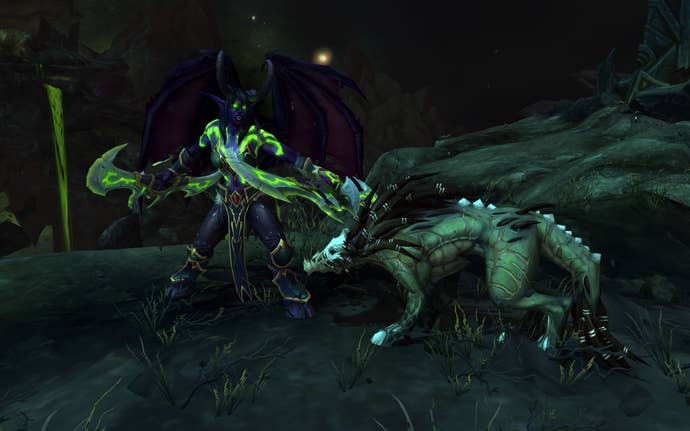
Things have certainly started out well. Legion's launch was as smooth as silk – a far cry from the hours-long server queues and game-killing lag that plagued Warlords of Draenor during its first week. The expansion kicked off at midnight on August 30th, and players could immediately access the new Broken Isles landmass that's front and center of this latest iteration of WoW. What's been a real boon this time around is that progression through Legion's four main leveling zones is dynamic – whatever your level, and wherever you go, the game scales in difficulty to match your character. This has helped distribute players across the Broken Isles, and has largely prevented the laggy choke points of yore where players were funneled through the more traditional linear leveling path.
Another consequence of this new system is a feeling of freedom and exploration to leveling that hasn't existed before. Wherever you venture, there are quests to find, and while each zone does a fairly good job of laying down a breadcrumb trail of activities that leads you around the map, I've enjoyed being able to mix things up by simply getting on my mount and going to look for interesting places and things to do. Even with my somewhat chaotic path through Legion's leveling zones, my character has evolved quickly and efficiently as I head towards the level cap of 110. Normally, I'd be alarmed by the swift progress I'm making, but this time out, Legion features an entire endgame zone at launch – Suramar – that promises plenty of content for those who've reached the level cap.
I've chosen to level up my priest, and it's been an interesting experience. Like all classes this expansion, there have been significant changes to the way the character works. One of the developer aims for Legion has been to "strengthen the distinctive identity of each of the 12 classes and their specializations". This has been done by "enhancing existing abilities, adding new abilities, replacing too-generic abilities with more iconic ones, adjusting rotations to better reflect spec identity, and even completely redesigning some specs to carve out a strong identity where previously there was none." Some of these changes have been quite controversial judging by the feedback on the official WoW forums, with some players claiming that certain class specs feel gutted and overly simplified.
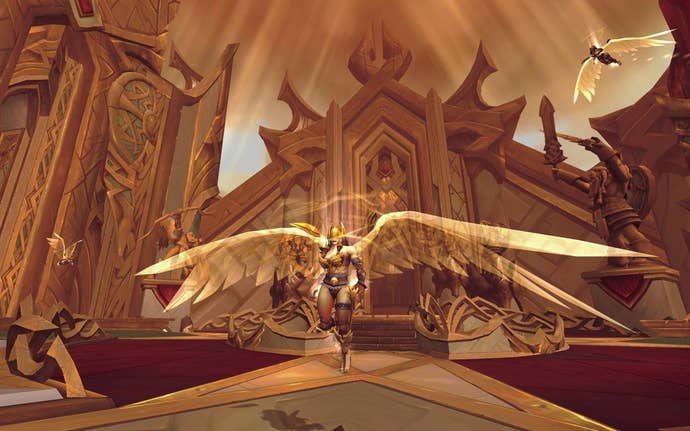
I can empathize with some of that sentiment. After playing my hunter, priest, and death knight at length during the Legion pre-patch, they all feel more limited in terms of situational options (especially in PvP), and their spell rotations are even more straightforward (and in some cases rote) than they were during Warlords of Draenor. On the positive side, class specs do now feel a lot less homogenized, and there is definitely a difference in playstyle to each character's specializations that makes the choice of spec far more meaningful. On the negative side, though, I don't necessarily think the changes have made my characters any more interesting and fun to play than they were before. Other characters may be different, of course, but I'm finding the game still feels very "spammy" – largely an exercise in hitting the same three or four buttons repeatedly, and reacting to the odd ability proc when it happens. That's always been an issue with WoW, though, so in some respects, it's a case of the more things change, the more they stay the same.
Supporting each character spec's baseline playstyle is a new artifact weapon that everyone gets at the start of Legion's leveling process. This item is initially linked to a spec of your choice, and is upgraded by earning power-ups through questing and other activities. As you upgrade your weapon, you earn points that you can invest in its trait system, which feels very much like a redesigned version of WoW's old skill trees. Traits basically incrementally enhance your character's spells and abilities, and there's a fair bit of choice in terms of what you can take.

So far, I'm on the fence about artifact weapons and the traits system. I can see what the developers are trying to do, and I like the idea behind it, but the process of upgrading the item feels slow and very grindy – especially when you consider that you have to do this for each spec. The benefits also seem fairly conservative. These are supposed to be iconic, very powerful weapons, but it just doesn't feel like that to me so far. Maybe when I've spent a lot of time upgrading my weapon I'll feel the extra oomph it's supposed to deliver, but at the moment – at level 107 – I'm not noticing that much of a difference, and ultimately my character still basically plays the same as it did at level 100. And that doesn't look like it's going to change anytime soon.
However, while I have mixed feelings about Legion's fundamental play mechanics, I'm enjoying its content. The leveling process is very much traditional WoW and exactly what you'd expect – largely killing things and collecting stuff like we've all done over the last 12 years – but it's slick and very refined. There are plenty of questlines that are lore-heavy, and for the most part there seems to be a really good feeling of progression towards an ultimate goal, much like I felt in the Wrath of the Lich King. I'm not much of a lore buff to be honest, but I'm enjoying Legion's storylines a lot. What helps here is that there are plenty of cut scenes this time around, both in-game and cinematic, and they bring a bit of drama to the proceedings, as well as articulate what's going on – I'm clear on what I'm doing, who the enemy is, and the overall politics of the situation.
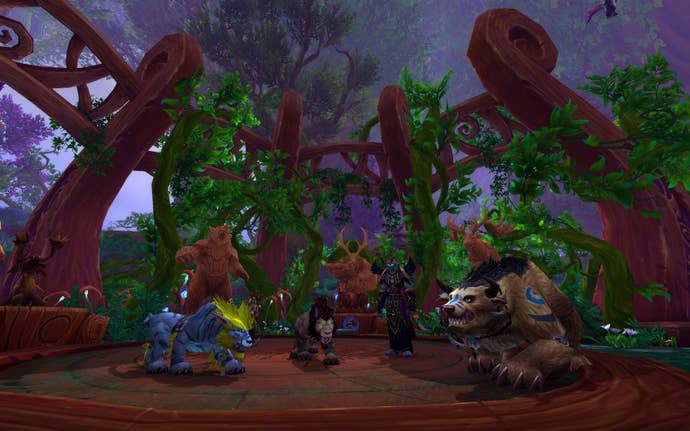
Legion also does a great job in positioning me as a hero, and that feels really rewarding. Whether it's a bad guy coveting my artifact weapon, or quest givers welcoming my arrival as someone who can save the day, I feel like I'm a true champion who's playing an important role in key events of the game, rather than watching them unfold, as has sometimes been the case in the past. There are a lot of interactions with NPCs that feel notable and high ranking, and I feel like I'm being sent out to do things that are worthwhile. Sure, there are plenty of "busy quests" that have fairly mundane requirements, but most of the major questlines feel like they have quite high stakes, and that I'm working towards a greater cause by effectively advancing the plotline through my actions. Questlines also segue into dungeons quite nicely, further enhancing the feeling of progression and growth, both of your character and building the storyline's momentum.
I've also been impressed with the journey through Legion's landscapes from a visual perspective. The art team has done a great job in making what is essentially a twelve-year-old game feel quite contemporary. The forests and mountains of the Broken Isles are beautiful in places, and while I haven't yet encountered a truly iconic zone that's blown me away like Zangarmarsh and Icecrown did the first time I clapped eyes on them, I'm nevertheless enjoying the scenery as I ride around Legion's colorful and varied environments.
Wrapping up my initial leveling impressions of Legion, I must say that it's a case of so far, so good. Despite some reservations about how certain characters play following their redesign – I think it's something I just have to get used to – and the artifact weapons feeling somewhat of a grind, I'm nevertheless enjoying what Legion has to offer. Its streamlined, dynamic leveling system is a success, and its interweaving plotlines are interesting and engrossing. Ultimately, I'm having more fun in WoW than I've had for years, and I'm really looking forward to checking out the endgame content to see if the game continues to be as entertaining as it has been so far.
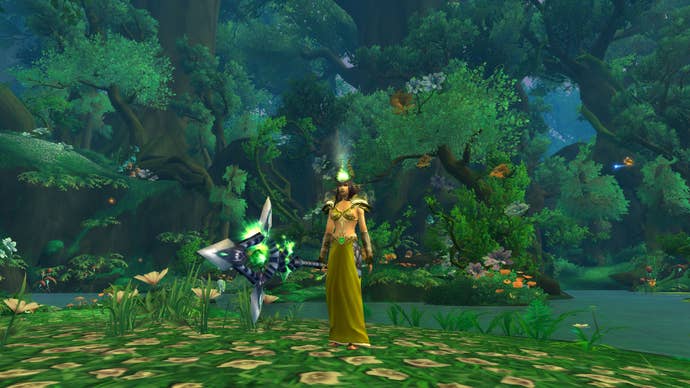
World of Warcraft: Legion at 110
I'm surprised at how quickly my priest has hit Legion's max level of 110. Even though I leveled up as a healer in nothing but the gear I earned through questing, the process has been efficient and enjoyable. What's really helped keep my experience bar moving is the dynamic questing system that scales with your character, and the way questlines blend into one another. It's ensured that no matter where I've traveled across the Broken Isles, there have always been activities to engage in. I've essentially leveled through all four of Legion's starter zones, and cherry picked the questlines that sounded the most interesting to me. As a consequence, I feel Legion's smooth, play-it-your-way progression makes for the best leveling experience of any WoW expansion so far.
What's immediately apparent when you hit 110 is the impressive volume of endgame content that Legion has available at launch. The moment I reached the cap, a whole new set of pursuits were made available for me to play, including a broad spread of timed world quests, a new order hall plot, and the endgame zone of Suramar, complete with its own set of questlines and objectives. Plus there are numerous faction reputation grinds across the Broken Isles, your artifact weapon to continue to level up and research, a suite of dungeons that scale from normal to mythic in difficulty, class quests, and a more-involved professions system that requires you to now complete series of quests to learn new recipes. In some respects, the choice of what to do first when you reach 110 is almost overwhelming, but that can only be a good thing for a game whose prior expansion felt starved of endgame content.
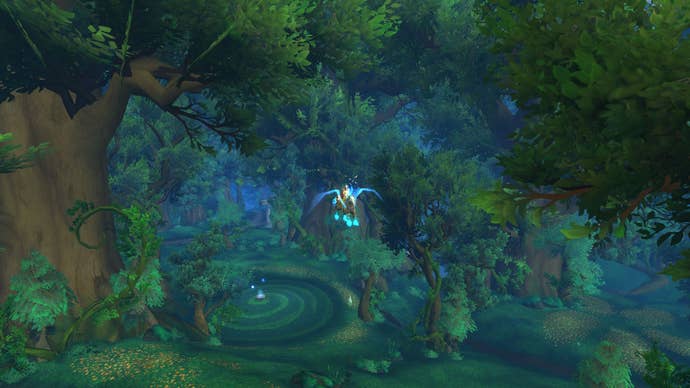
I've played through a couple of dungeons so far – Eye of Azshara and Halls of Valor – and really enjoyed the experience as a healer. Both were run with PUG groups on normal difficulty, and it was pretty straightforward keeping everyone alive (my item level is around 800 at present). Some of the boss battle mechanics are quite inventive, and while they didn't particularly challenge the groups I played with – we just burned down the bosses with relative ease – I can see how they might scale through heroic and mythic difficulties to be quite tough. Many fights feature "don't stand in the fire" design elements and require a lot of movement, resulting in the action feeling quite fluid, dynamic, and exciting.
Over the past few expansions, I haven't been too much of a dungeon-crawler, but I think that'll change for Legion. Partly because it seems that dungeons play a really important role in leveling up professions, and for the class quests, but mostly because my interest in them has been piqued by my positive experiences so far. Both Eye of Azshara and Halls of Valor look absolutely great, and I'm interested to see just how the other dungeons stand up from a visual perspective. But bottom line, I just had fun playing through them. On normal difficulty, they're fairly easygoing, and give me the chance to learn the basic mechanics of the boss fights in a low-risk way so that I can move up to tackle heroics when I'm ready for them.

One aspect of the game I haven't mentioned yet is player versus player. I've spent a huge amount of time in WoW's battlegrounds in the past, and have been really looking forward to sampling the changes that Legion brings to this portion of the game, despite some disappointment that there are no new battlegrounds for this expansion. What is new, however, is a prestige leveling system that enables you to learn new PvP-specific spells, and ability enhancements and perks as you earn honor from playing battlegrounds and arenas. It's a great idea, and one that helps give PvP more depth and interest than it has had in the past.
But the biggest change to PvP is the new template system that strips away the stats and bonuses of a character's gear, and essentially equalizes players so that they're competing on a level playing field. At least, that's the way it's supposed to work, but based on my experiences with battlegrounds so far (and judging by the many complaints on the official WoW forums), the new system is in need of some adjustment. Many melee templates seem to be over-tuned at the moment, resulting in a very high damage environment where players can quickly be overwhelmed and killed. Combine that with the myriad of crowd control effects, interrupts, and gap-closing moves that melee classes have, and it creates conditions that are pretty miserable for casters, and healers in particular.
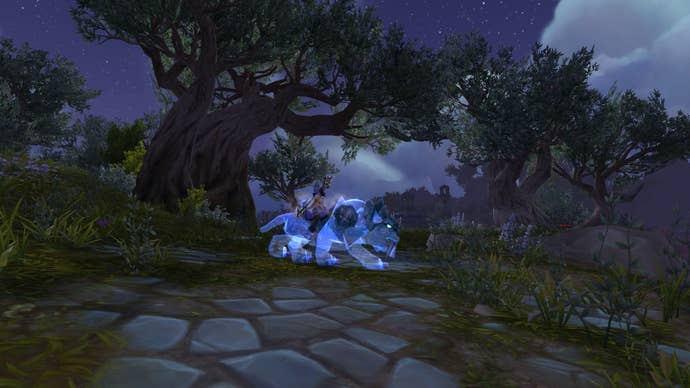
I really enjoy the challenges of PvP healing, and have played through some of WoW's most unbalanced times, but Legion is currently up there as one of the toughest PvP environments for casters I can remember. Fortunately, it seems fairly easy for the developers to fine-tune PvP now, because they can simply adjust the different class templates independently of one another, and I'm hoping that they'll react to the complaints and bring a little more balance to the proceedings soon enough. But for now, PvP is definitely nowhere near as much fun as I'd like it to be – speaking from a healer perspective, of course. I'm sure if I'd leveled up a demon hunter – one of the prime overpowered melee suspects at the moment – I'd be feeling very differently about it.
Despite my complaints about the currently unbalanced PvP facet of the game, I think that overall, WoW is in as good a shape as it has been for many years. Legion is an expansion that packs a tremendous amount of content at launch, and looks to continue to add to its impressive roster of activities as the new Emerald Nightmare and Suramar Palace raids open, and the much-anticipated Karazhan 5-man dungeon is ushered into the game in the upcoming 7.1 content patch. Whether the game will continue to maintain this considerable momentum over the course of the expansion's duration remains to be seen, but for now Legion offers a smorgasbord of things to do that should keep the WoW faithful busy and engaged over the coming weeks and months.
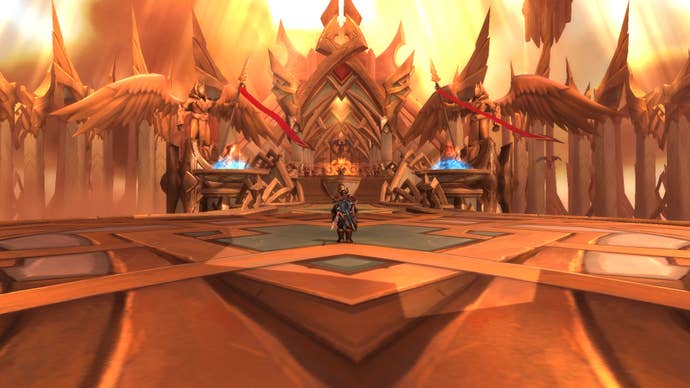
Mike Williams, Second Opinion
World of Warcraft needed a fix. Blizzard Entertainment has been tasked with fixing an MMO that has grown long in the tooth after 12 years on the market. Newer MMOs have improved on the formula. WoW itself has seen a precipitous decline in its overall number of subscribers, partially due to the lukewarm reception of Mists of Pandaria and the disastrous content glut after the launch of Warlords of Draenor.
WoW has needed a soft reboot and it seems fitting that the series returns to the villains of the first and arguably best-remembered expansion: The Burning Legion.
From the starting gun on this expansion, Blizzard drops you right into the war. You're there as the Horde and Alliance make an assault on the Broken Isles, the place where Sargeras, the fallen Titan and leader of the Legion is resting. The Legion wants to summon Sargeras and to do so, they're trying to recover the Pillars of Creation, artifacts of great power. The citizens of Azeroth don't want that to happen.
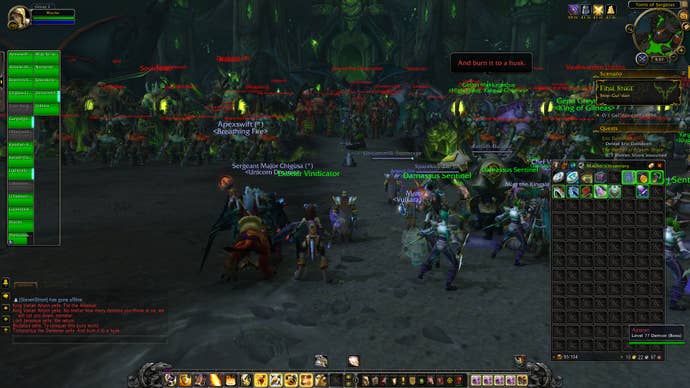
WoW D-Day happens right when you accept the first quest in the expansion and things turn out worse once you're done the scenario. People die, alliances are broken, the hammer is dropped, and when it's done, you're thrown out into a world where the Legion is sort of winning. This is the backdrop for this expansion.
In Warlords of Draenor, I noted that Blizzard's storytelling had improved over the years. For all the faults of Blizzard during the previous expansion, the studio is remarkably good at telling an expansion-wide story alongside smaller zone-wide tales. The focus on the player as the Commander and the initial idea of the Garrison system was a winner. The problem is the expansion overall was thin, with only two additional content patches over two years. The Garrison itself also got bogged down in tedium due to management of a large number of followers.
The sentiment surrounding Legion is that Blizzard has fixed the mechanical and design issues of Warlords, but honestly what I'm seeing is building upon that foundation. Warlord's structure wasn't poor, it was just lacking in longevity. In Legion, the player is still the story focus of many of the missions; you're lauded as the great Commander of the conflict against the Iron Horde and you rightly stand beside the great lore heroes of Warcraft. Where Blizzard has improved is the details of this focus.
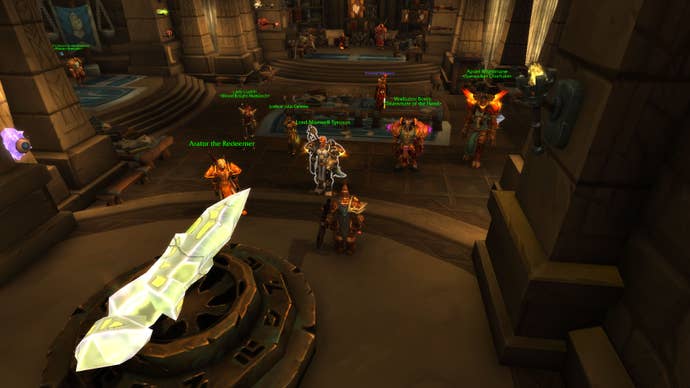
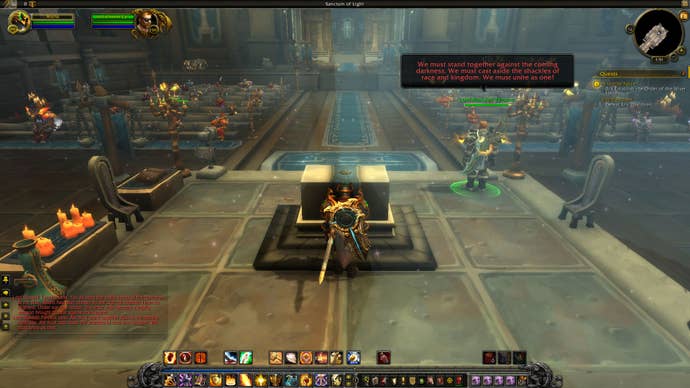
Foremost is the Order Hall system, which places your character at the helm of in-game organization that leads your entire class. As a Paladin, I'm the Highlord that drives the entire Paladin order forward and many of the Paladins of lore on both side follow my lead. This is one of the stronger parts of Legion, with an extensive series of Order Hall quests focused purely on you and your class.
This begins with the quest to obtain your Artifact Weapon, a system that replaces not only the weapon upgrade system, but also the talent trees for this expansion. The classic talent tree stop at 100, every additional benefit is thrown onto your weapon. You'll draw Artifact Power from items you'll receive in quests, dungeons, and raids, which you then use to unlock new charater talents. It's an okay system, the issue is it's built to last for the whole expansion, so the progression feels a bit slow overall. Gaining a rank is an existing artifact talent just doesn't feel as satisfying as getting a new ability or talent every few levels.
Each weapon is based on your class and specialization: my primary Artifact Weapon as a Protection Paladin is the sword-and-board combo of Oathkeeper and Truthguard. In later quests, I also picked up the Retribution sword Ashbringer and the two-handed hammer of healing justice The Silver Hand. Obtaining each Artifact requires diving into scenarios that feed into what Blizzard calls your class fantasy: the Truthguard quest had me diving in Vykrul lore and defending a small crew from a sizable boss, while the Silver Hand quest had me healing a team against oncoming waves of foes while another character completes a ritual. (I'm a better tank than healer, so the latter was harder for me.) These quests are very good at saying, "This is what you're supposed to be doing as this class and spec", while also feeling suitably epic.
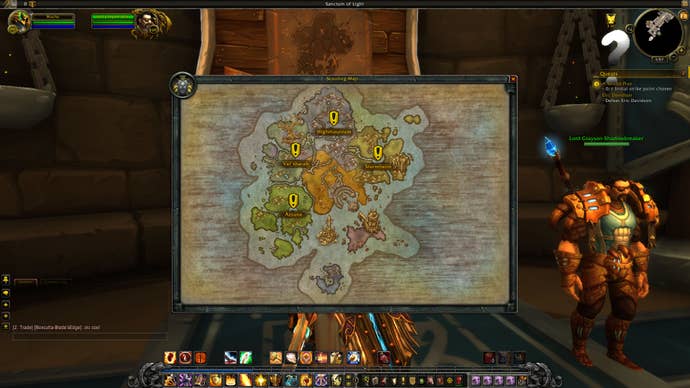
The Order Hall also hosts a smaller, more focused version of the Follower Mission system from Warlords. Instead of 20+ followers that you have to keep track of and manage on missions, the Order Halls feature around 5-6, all named lore characters that have been a part of your specific class in the game previously. My Paladin now hands out orders to Blood Elf Paladin leader Lady Liadrin and Sunwalker Tauren Aponi Brightmane. The focus helps make each follower more important and clamps down on the tedium.
At the head of your Order Hall, you're pushed out into the rest of the Broken Isles and choose which zone you want to head towards. Azsuna features the new class, Demon Hunters, and members of the Blue Dragonflight as they fight the Legion within Elven ruins. Val'Sharah is similarly Elven focused, but dealing with druid lore: Malfurion Stormrage and the Emerald Nightmare under the control of the satyr Xavius. The peaks of Stormheim recall the Vykrul flavor of Wrath's Northrend and the zone requires a grappling hook to traverse certain areas. Then there's Highmountain, a Tauren-centric region that requires a glider.
Each zone feels more "real" than some of the past theme park-style World of Warcraft regions, but I'd have to say they probably fall short visually of some of the past greats like Deepholm, the Jade Forest, Dalaran floating above the Crystalsong Forest, the original Nagrand, or Vashj'ir.
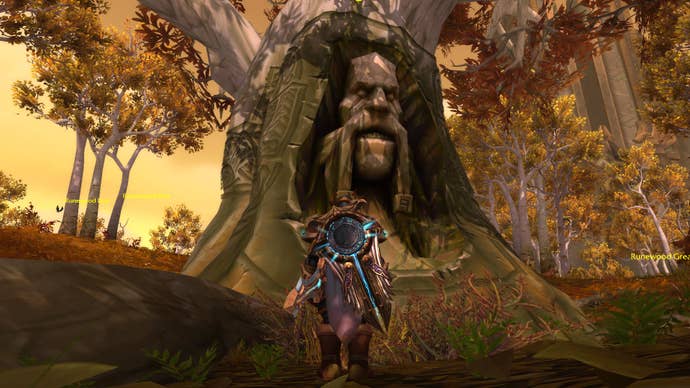
What works is the weaving of your Order Hall quests and class amongst the general storyline of the zone. Certain NPCs have specific dialogue and callouts depending on what class you are, especially if they have a connection in the lore with that class. This isn't new to WoW, but I find Blizzard has done a better job with that here in Legion. Honestly, the game as a whole now feels more solo-friendly, not unlike Bioware's Star Wars: The Old Republic. It's your story and Blizzard tries to acknowledge that.
The game has also been visited by a number of quality of life changes in this expansion. A game with a history like World of Warcraft is reticent to make sweeping changes because it might anger the player base. I call these the "shackles of success" and you'll find that games of this type won't make the needed changes until things start to turn sour. Blizzard has stepped in and made a number of tweaks, some of which work better than others.
As Jaz noted, the zones now scale to your level: if you're level 101, you'll see enemies at around that level, while a level 105 will see enemies around his or her level. This means the game is a consistent experience no matter where you are in the Broken Isles and you no longer have to worry about running into a high-level player in an earlier zone destroying everything. The change has two big benefits: in addition to the aforementioned choice of zone, Legion has the ability to send max-level players back to any zone for level 110 world quests. Essentially, every zone remains "live" for the entire expansion, unlike the relatively dead middle zones of previous expansions.

The second benefit is just dropping barriers. You can play with anyone of any level and dungeons scale as well, so joining a team of higher-level players isn't a problem. My first dungeon was as a level 103 tank with a team of three 110s. No issues whatsoever. Knowing the fights is more important that what level you are and I see that as a net gain, especially since players will be going through zones in their own personal order.
Additional quality-of-life changes include fixing the game's enemy tagging and gathering systems. Like Guild Wars 2, enemies are free-tagged now. As long as you've hit it, you get full XP credit and looting rights for the kill. This lessens the situations you used to run into in WoW, where you'd need to "kill 10 X" and you couldn't because the zone was full of other players. This extends to world bosses and named enemies, which were a huge pain point for players at the beginning of any expansion. Likewise, mining and herb notes are player-specific, so you don't have to rush after a node to prevent another player from taking it. It's your node, take your time.
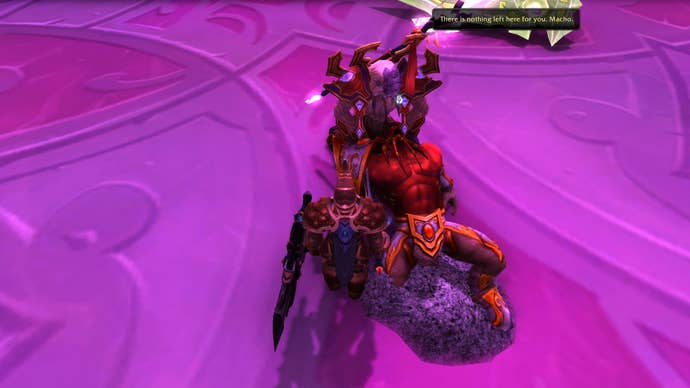
These two changes are huge from a moment-to-moment play perspective and I've wanted them for a very long time. Players are supposed to be fighting together, not avoiding one another, or sitting on the ground waiting for a quest enemy to respawn because you didn't tag it first. These are legitimate issues that WoW has carried for years because it's World of Warcraft and couldn't really be arsed to change. One of Blizzard's best aspects is the open willingness to see a great idea from another developer and say, "That's great, we should copy that and polish it up." There's room to graft those ideas and systems into WoW, while still retaining what makes it "WoW".
And that's really my early takeaway from World of Warcraft: Legion. There's a real feeling that the content glut during Warlords of Draenor was Blizzard's current WoW team standing back and taking a look at systems that worked well and those that were just carried forward because they've always been there. There are significant changes, including the Order Halls, the level scaling, the new Artifact Weapon system, and enemy tagging. Alone they're good ideas; together, they represent a Blizzard that's actually taking a look at World of Warcraft and attempting to evolve the game into the future.
That's something WoW has needed and I'm glad Legion looks to be that first step.
ConclusionAfter the disappointing Warlords of Draenor, World of Warcraft is back to form with Legion. Featuring a dynamic, scalable questing system, redesigned classes, new artifact weapons, a strong, lore-heavy storyline that positions you as a bona fide champion, and a ton of endgame content at launch, Legion feels like the strongest WoW expansion since Wrath of the Lich King. Whether it can continue this momentum over the expansion's duration remains to be seen, but for now, Legion is the invigorating shot in the arm that the game sorely needed.
